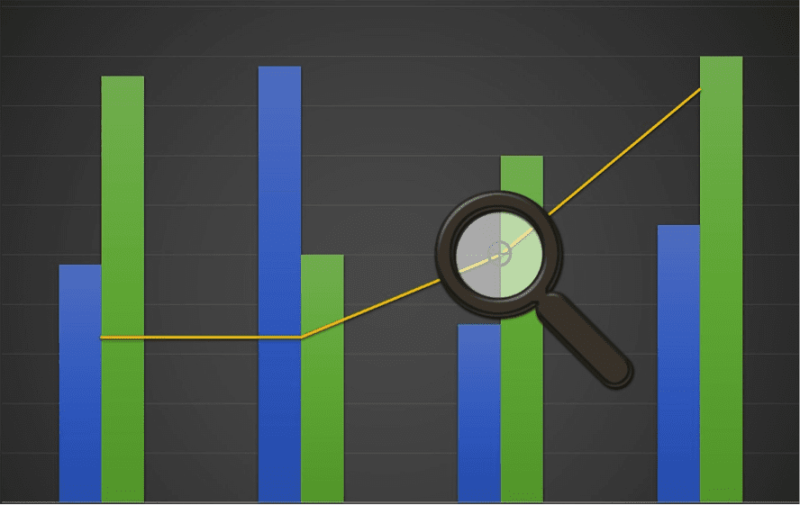Although using varying terms averaging down can make one skeptical first impression, a trading strategy that uses the averages down trading strategy can yield a profit both in the short and long term prospects.
The investment strategy aims to combat irrationality and loss aversions we carry in our heads. Averaging down viable strategy consists of purchasing more assets from the same stock market or commodity trade as they fall in price. In this case, adjusting for the smallest amount reduces the share price paid by the broker for the asset.
Also Read: Average Directional Movement Index: How To Develop & Measure
Contents
- What is Averaging Down a Stock?
- Does Averaging Down Trading Work in the Investment Strategy
- Example of Averaging Down
- Do You Lose Money from the Average Price when the Stock Price Goes Down?
- Bottomline
- FAQs
What is Averaging Down a Stock?
The average down is an investment strategy where investors buy more stocks when prices fall and lowers their average stock cost. Let’s assume you buy 200 shares at $70 per share; then, it goes down to $30 per share. The following 100 shares you buy at $30 will be reduced to 45 dollars, a difference of 45% from the average.

Does Averaging Down Trading Work in the Investment Strategy?
It is possible that buying the stock turns at low prices works. The stock can therefore be priced low, as it’s in danger of technological obsolescence.
Averaged down is effective in companies whose fundamentals are sound or that are undervalued in some basic valuation metrics.
Advantages of Averaging Down
Investors need to reduce the average cost significantly in the stock market. If the stocks turn around, this ensures the stock’s lower breakeven price and gains a higher dollar cost averaging.
For example, a previous example from the widget shows a method to decrease the Breakeven Point of a position to 45.
Disadvantages of Averaging Down
Averages down will only work if stocks rebound as they magnify gains. Nevertheless, the loss becomes even more severe if the stock price declines. If the shares have remained flat or declined, an investor may regret the choice of averaging down or exiting.
Therefore, an adequately analyzed risk profile should be considered when comparing the underlying stock with the average cost downward.
Remember: Stock Eventually Rebounds
A rebound is a recovery from a previous time of negative activity or losses in finance and economics, such as a corporation producing excellent results after a year of losses or releasing a new product line after battling with false beginnings.
The rebound in the context of stocks or other funds indicates that the average price has increased from a lower level.
The stock eventually rebounds in the general economy signifies that economic activity has grown from lower levels, such as the recovery from a recession.
Example of Averaging Down
Let’s say you have long-term Widget Co stocks on hand and believe the future of Widget Co is positive. The investor might be inclined to view a sudden drop in the shares as a potential buyer and probably thinks that some other investors are unsatisfactory with Widget Co (a contrary perspective).
Stocks that have decreased in price may justify the decision to assess their relative value at a lower price than the intrinsic value of the stock.
Do You Lose Money from the Average Price when the Stock Price Goes Down?
Trades that average down increase the loss but decrease the value of bounce back returns. The move may benefit the long-term investor when the stock market recovers. The day trader needs an underlying asset with massive falls and rises within a day.
Investing in discipline entirely is about protecting the loss. Instead, it is an exercise of thought rather than a purely psychological exercise with an optimistic effect. Using the averages isn’t always the right strategy.

Explore your trading psychology from a different perspective – while looking at fading financial instruments, you could miss trading shares going the opposite direction, such as movement stocks.
You’ll probably lose money if you average out. You’ll lose money if you buy more shares in the same company that has fallen in price. It’s risky and should only be implemented when a person understands and believes that their investment will return.
Also Read: Day Trading for Dummies
Assess a Company’s Fundamentals
Before the average of a stock position, the company s basic information requires extensive scrutiny. Investors should evaluate whether significant stock drops were temporary or symptomatic. The company must assess the competitive environment, the business’s financial performance, and its capital structure.
Restrict Averaging Down to Blue-Chip Stocks
Averaging down is best done selectively on specific stocks instead of using a catch-all strategy for all stocks in a portfolio. Averaging down is most effective when confined to high-end companies with high-risk corporate bankruptcies. Blue chips that satisfy stringent conditions are likely candidates to average down strategy.
Bottom Line
Averaging down is not an easy strategy. Take main advantage of your risk-freeness by losing just one little bit. If you want a longer-lasting investment in a company, it would be wise to lower your risk ratio. It allows you to accumulate additional stocks for a lower cost if you believe in the business’s fundamental strength. You may be able to buy some stock for an incredibly low cost and possibly make quite some money.
Investors with longer-term and contrary investing tend to favor average-down. It’s not an easy strategy. When selling against a company, you are taking an unproductive strategy and going against trends. If you go against what everyone does and sell stocks at auction, it may be lucrative, but it may even cause you to miss out on the risks that lead others to sell.
FAQs
Is it Good to Average Down in Stocks?
Averages are an excellent way to reduce a company’s average costs substantially. As long as the stocks turn back, this will provide lower breakeven levels for the positions and higher gains in dollar terms.
In the long run, the desire to purchase stock should weigh in on the decision just as much as the most recent price changes. After all, examining a stock includes more than just recent price changes.
What Does it mean to Average Down a Stock?
Averaging down consists of investing by buying shares of a company when its share prices decrease, thereby decreasing the cost average per share.
Is it Better to Average Up or Down in Stocks?
The prime advantage of averaging down is an investor can purchase more of a stock at a lower price than they’ve previously paid, with the potential for significant gains. On the other hand, an average up means a rise in your purchase cost and squeezing your profit probabilities.
What Happens When You Average Down?
Averaging down means buying more of the same asset when prices drop, resulting in a lower average price per share. It’s called buying dipped. Adding more positions when the price declines can make a profit in a secular bull market.



